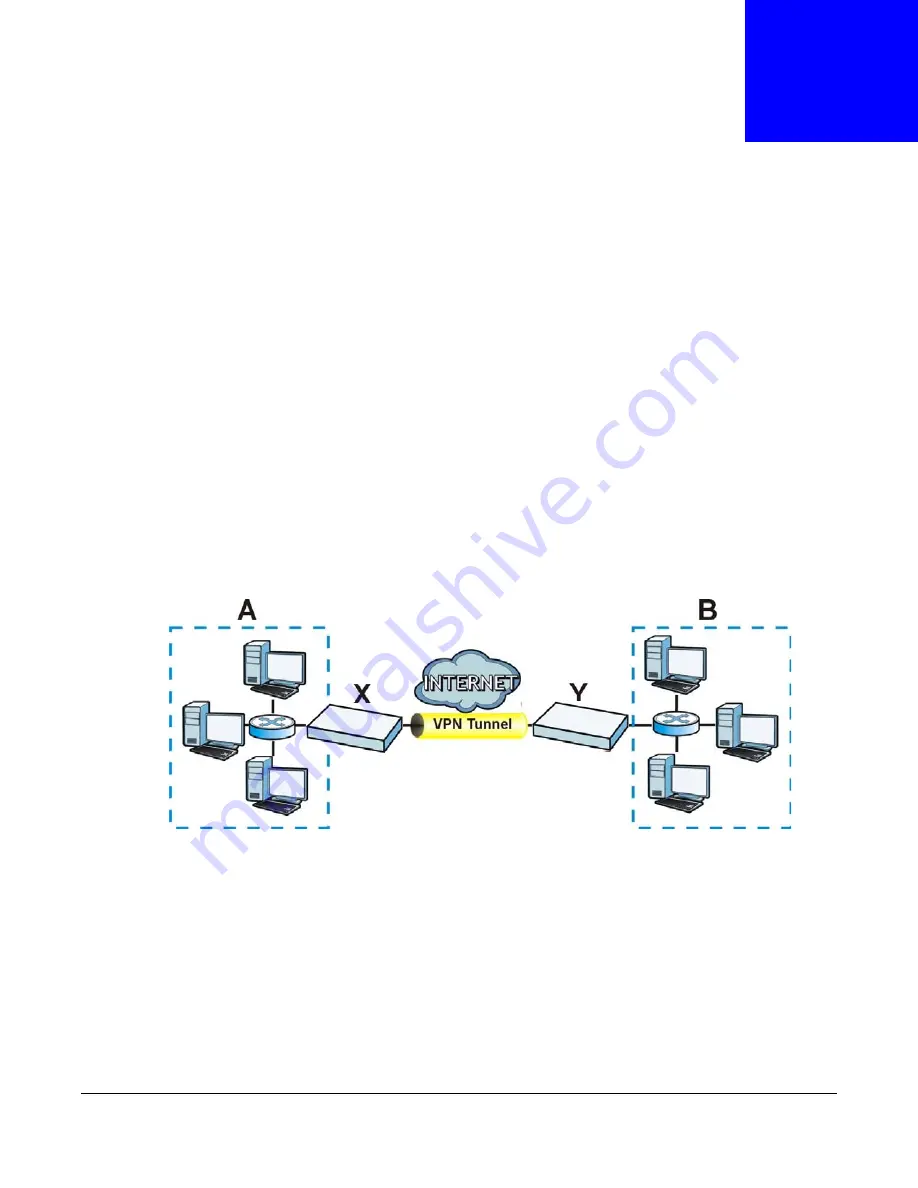
UAG5100 User’s Guide
288
C
H A P T E R
3 0
IPSec VPN
30.1 Virtual Private Networks (VPN) Overview
A virtual private network (VPN) provides secure communications between sites without the expense
of leased site-to-site lines. A secure VPN is a combination of tunneling, encryption, authentication,
access control and auditing. It is used to transport traffic over the Internet or any insecure network
that uses TCP/IP for communication.
IPSec VPN
Internet Protocol Security (IPSec) VPN connects IPSec routers or remote users using IPSec client
software. This standards-based VPN offers flexible solutions for secure data communications across
a public network. IPSec is built around a number of standardized cryptographic techniques to
provide confidentiality, data integrity and authentication at the IP layer. The UAG can also combine
multiple IPSec VPN connections into one secure network. Here local UAG X uses an IPSec VPN
tunnel to remote (peer) UAG Y to connect the local (A) and remote (B) networks.
Figure 198
IPSec VPN Example
30.1.1 What You Can Do in this Chapter
• Use the VPN Connection screens (see
) to specify which IPSec VPN
gateway an IPSec VPN connection policy uses, which devices behind the IPSec routers can use
the VPN tunnel, and the IPSec SA settings (phase 2 settings). You can also activate or deactivate
and connect or disconnect each VPN connection (each IPSec SA).
• Use the VPN Gateway screens (see
) to manage the UAG’s VPN
gateways. A VPN gateway specifies the IPSec routers at either end of a VPN tunnel and the IKE
SA settings (phase 1 settings). You can also activate and deactivate each VPN gateway.
















































